
e've all seen and heard it before: Smart. Rich. Asian. This stereotype is what's called the Model Minority Myth, and it characterizes Asian Americans as a polite, law-abiding group that has achieved a higher level of success compared to the general population through some innate talent somehow brought about by race and culture. We all know about this, but do we really understand how it came to be?
Now, a myth like this didn't penetrate the public consciousness without outside help, and much of it can be traced back to media. To truly understand where this myth comes from, we'll have to go back to the 19th century, when Asians weren't perceived as model citizens just yet.
In fact, Asians in America were once seen as a scourge and were referred to as the Yellow Peril. This took on a new life in the United States, among pioneers and early settlers who were promised prosperity but were then met with nothing. Their anger was redirected to Chinese workers building the railroads along the Pacific, who became the scapegoats. It is because of this that Asians were originally perceived to be nefarious people looking to steal jobs and soil everything that America stands for. This stereotype stuck around and even inspired some early films. Such portrayals can be found in the Chinese character in the 1932 film The Mask of Fu Manchu, where the titular Fu Manchu, played by Boris Karloff, was one of the earliest evil genius archetypes in modern cinema. Echoes of Yellow Peril can even be found in modern films, too, as the upcoming Marvel movie Shang-Chi and the Legend of the Ten Rings puts Shang-Chi, who is canonically the son of Fu Manchu, at the forefront. So if Asians were painted in such a bad light, when did this all change? There are two events that perpetuated this shift. One is the Immigration and Naturalization Act of 1965, which abolished the quota system for immigration. Instead, the law based immigration off of familial ties and prioritized people who were skilled professionals. This led to an influx of Asian professionals migrating to the United States. Then there was William Petersen's January 1966 article in The New York Times, entitled "Success Story: Japanese American Style." The article proposed that the apparent success of Japanese Americans was due to their incarceration in internment camps during World War II, which gave them a great work ethic and strong cultural values. Petersen even proposed that this made Asians inevitably more successful than white Caucasians.
To this day, iterations of this idea can be seen in modern film through characters like Data from The Goonies (1985) and Takashi Toshiro from Revenge of the Nerds (1984). Hollywood's insistent portrayal of Asian Americans as stereotypically smart characters feeds off of and reinforces these biases. In fact, researchers at Harvard and Ohio State Universities have found that media affects our subconscious judgments toward others. But the effects of film go way beyond just perception — as it can manifest in one's opportunities, developmental experiences, and even mental health.
According to the National Alliance on Mental Illness, the stereotype of all Asian Americans as wealthy, highly educated, and stable puts undue pressure on them. This makes them less likely to reach out for help regarding mental health issues and ultimately affects how they live their day-to-day lives. This is something highlighted by psychologists at Maryville University, who point out that mental health and learning success are intricately intertwined. And in the case of minorities who experience the enduring pressure of this cultural myth in Hollywood and the world that worships it, this can have drastic consequences. One such manifestation of this might be seen in how the Centers for Disease Control and Prevention now ranks suicide as the ninth leading cause of death among Asian Americans and Pacific Islanders.
So, are all stereotypes bad? While that may sound like an absurd question to ask, the nuances of this subject are best described under the lens of what many perceive as a positive stereotype: Asian Americans are all brilliant in the fields of math and science. Unlike other stereotypes, especially those surrounding other racial and ethnic groups, this one pushes a positive narrative. But not unlike other stereotypes, all the Model Minority Myth does is cause harm to the minority that it pertains to.
This is why films like Harold and Kumar Go To White Castle (2004) are admirable when put under the lens of the Model Minority Myth, as the inherent incompetence of the characters can be seen as a subversion of years upon years of systemic discrimination. The bottom line, of course, is that although Asian characters can be portrayed as intelligent, they should never be defined as intelligent for simply being Asian. Y. Gbadamosi Y. Gbadamosi is a 21-year-old business studies student who enjoys traveling and a good cup of coffee. She loves Film and its influence on mainstream culture
For years I have been writing fiction in order to communicate social science research and ideas to both student and public audiences. There are many benefits to doing so. People tend to enjoy reading fiction (there’s a reason most folks elect to bring novels, not textbooks, on vacation). When we’re reading a novel we enjoy, we become immersed in the story. There’s neuroscience that supports what many of us intuitively know, fiction, and art more generally, are highly engaging. In fact, fiction engages more parts of the brain and has a longer-lasting effect than nonfiction, the focus of the field “literary neuroscience.” The pedagogical possibilities are abundant. Add to this that fiction is uniquely effective at promoting empathy, self and social reflection, unsettling stereotypes, presenting alternative understandings, and making micro-macro connections. Moreover, it’s widely accessible with the potential to contribute significantly to public sociology. These are all topics I have written about in the past. In this essay I briefly discuss three explicit sociological lessons interwoven into my new novel, Blue as a means of demonstrating “what is possible” by merging sociology and fiction.
I begin with a brief synopsis of Blue, followed by a discussion of three sociological lessons: 1. Cooley’s “looking-glass self” 2. Goffman’s dramaturgy, and 3. socialization and popular culture. Please note that Blue is intentionally centered around characters college students are likely to relate to (a tip for those writing sociological fiction, always consider your audience when you select a genre, style and develop characters). Synopsis of Blue Blue follows three roommates as they navigate life and love in their post-college years. Tash Daniels, the former party girl, falls for deejay Aidan. Always attracted to the wrong guy, what happens when the right one comes along? Jason Woo, a lighthearted model on the rise, uses the club scene as his personal playground. While he’s adept at helping Tash with her personal life, how does he deal with his own when he meets a man that defies his expectations? Penelope, a reserved and earnest graduate student slips under the radar, but she has a secret no one suspects. As the characters’ stories unfold, each is forced to confront their life choices or complacency and choose which version of themselves they want to be. Blue is a novel about identity, friendship, and figuring out who we are during the “in-between” phases of life. The book shines a spotlight on the friends and lovers who become our families in the fullest sense of the word, and the search for people who “get us.” The characters in Blue show how our interactions with people often bump up against backstage struggles we know nothing of. Visual art, television, and film appear as signposts throughout the narrative, providing a context for how we each come to build our sense of self in the world. With a tribute to 1980s pop culture, set against the backdrop of contemporary New York, Blue both celebrates and questions the ever-changing cultural landscape against which we live our stories, frame by frame. Charles Horton Cooley “Looking-Glass Self” There are many different theories in sociology and social psychology about how when we’re labeled by others we can internalize those labels. In the mainstream, people often talk about “self-fulfilling prophecy.” My favorite theory when I was in college, which I was so captivated by that I changed by major from theatre to sociology, was Charles Horton Cooley’s “looking-glass self.” As you may know, it essentially posits that our self-concept develops as we engage in interaction with others. We imagine how we appear to them and how they’re judging us, and that shapes how we feel about ourselves. This happens throughout our lives, in one form or another, moment to moment. Based on my personal and professional experiences I believe there’s a danger that we start to see ourselves one way or another because of something we did, something that was done to us, or how others see us and treat us. We can get stuck with an idea of one version of who we are, based on an overarching sense of how others perceive and judge us. But I also believe that we always have a choice. Not who we were yesterday or who we thought we were, but who we are right now, in this moment, and each one that follows. In Blue I used the relationships between characters, such as the dialogue between Tash and Aidan, paired with internal dialogue (revealing interiority—a character’s thoughts) to bring some of this out. My goal was to sensitize readers to how we judge ourselves based on our assumptions of how others see us. I then went on to suggest that in fact, we are possibilities and have a choice in each moment of who we are and who we want to become. Erving Goffman “Dramaturgy” Like many in our field, I first learned the basics of Goffman’s work in my early sociological theories courses. His theories of “back stage” and “front stage” have served me well not only as a sociologist, but in my own life. I often think about how we’re confronted with people’s behind-the-scenes stuff that we can’t see during our interactions with others. In other words, people have things going on that we’re not aware of and when we interact with someone and get a reaction we may not expect, it could be that we’re bumping up against a backstage we can’t see. For example, if your romantic partner is short with you in response to something you tell them and you take it personally, feeling hurt or offended. Their reaction to you may be based on a phone call they just had with their boss who piled unexpected work on them or a call with a parent that pushed one of their buttons. Their reaction may also be based on something much deeper, and less immediate, such as experiences being bullied as a kid or any number of things that you unwittingly bumped up against. You don’t know. Teaching this fundamental idea from sociology not only develops one’s sociological perspective, but has the potential to foster self-awareness and empathy in our interactions with others. I decided fiction was a good vehicle for demonstrating this. The protagonist in Blue, Tash, experienced a possible assault years earlier (when she awoke in her boyfriend’s bed after a New Year’s Eve party, naked between him and his roommate with no memory of what happened). In Blue I explored where we’d find this character years later, and how any trauma she may have experienced is impacting her in the present; impacting how she sees herself and how she responds to others. This is one example of how a dramaturgical lens was written into the narrative so that readers can see the theory in action. 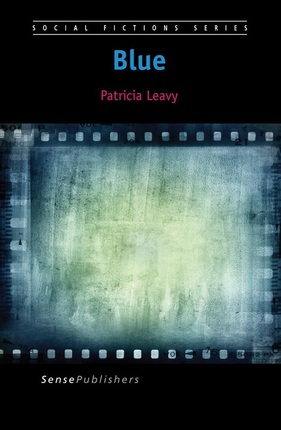
Socialization and Popular Culture One of concepts taught in sociology from introductory levels onward is socialization, the lifelong process by which we learn the norms and values of our culture. One of the primary agents of socialization is the media, or popular culture. As a self-proclaimed pop culture junkie, I’ve always been interested in how individuals select what pop culture to consume and how they internalize its messages. For 12 years I taught a course called Images & Power which investigated and critiqued popular culture. I continued to do so in my first novel. But while sociologists often critique pop culture, it has positive roles in people’s lives too. In Blue I wanted to show how we use pop culture and art to help us understand and get through our own lives. The pop culture we choose to consume may become a part of our identity and active in co-creating our experiences. I think at times we can understand our lives, things we can’t yet even name, through art. This helps explain why some people become emotionally invested in their favorite television shows, movies or music, watching or listening to them repeatedly. In order to unearth these issues in Blue characters are shown talking or thinking about the pop culture they consume, the themes there within often mirroring the character’s present-day struggle. The characters are often imaged in the “glow” of light from television or movie screens, their own stories illuminated by the stories of popular culture. Patricia Leavy, Ph.D. Patricia Leavy, Ph.D. is an independent sociologist and author (formerly associate professor of sociology, founding director of gender studies, and chairperson of sociology & criminology at Stonehill College). She has published nineteen books including Method Meets Art 2nd edition, Fiction as Research Practice, The Oxford Handbook of Qualitative Research, and the best-selling novels, Low-Fat Love, American Circumstance, and Blue. She is the creator and editor for five book series with Oxford University Press and Sense Publishers and a blogger for The Huffington Post and The Creativity Post. She has received career awards from New England Sociological Association, the American Creativity Association, the American Educational Research Association Qualitative Special Interest Group, and the International Congress of Qualitative Inquiry. Follow Patricia on Facebook, Twitter, and check out her personal website, www.patricialeavy.com
Originally posted at Montclair SocioBlog
In a previous post, I wrote about a University of Illinois football coach forcing injured players to go out on the field even at the risk of turning those injuries into lifelong debilitating and career-ending injuries. The coach and the athletic director both stayed on script and insisted that they put the health and well-being of the scholar athletes “above all else.” Right.
My point was that blaming individuals was a distraction and that the view of players as “disposable bodies” (as one player tweeted) was part of a system rather than the moral failings of individuals. But systems don’t make for good stories. It’s so much easier to think in terms of individuals and morality, not organizations and outcomes. We want good guys and bad guys, crime and punishment. That’s true in the legal system. Convicting individuals who commit their crimes as individuals or in small groups is fairly easy. Convicting corporations or individuals acting as part of a corporation is very difficult. That preference for stories is especially strong in movies. In that earlier post, I said that the U of Illinois case had some parallels with the NFL and its reaction to the problem of concussions. I didn’t realize that Sony pictures had made a movie about that very topic (title – Concussion), scheduled for release in a few months. Hacked e-mails show that Sony, fearful of lawsuits from the NFL, wanted to shift the emphasis from the organization to the individual. Sony executives; the director, Peter Landesman; and representatives of Mr. Smith discussed how to avoid antagonizing the N.F.L. by altering the script and marketing the film more as a whistle-blower story, rather than a condemnation of football or the league…
I don’t know what the movie will be like, but the trailer clearly puts the focus on one man – Dr. Bennet Omalu, played by Will Smith. He’s the good guy.
Will the film show as clearly how the campaign to obscure and deny the truth about concussions was a necessary and almost inevitable part of the NFL? Or will it give us a few bad guys – greedy, ruthless, scheming NFL bigwigs – and the corollary that if only those positions had been staffed by good guys, none of this would have happened? The NFL, when asked to comment on the movie, went to the same playbook of cliches that the Illinois coach and athletic director used. We are encouraged by the ongoing focus on the critical issue of player health and safety. We have no higher priority. Jay Livingston Jay Livingston is the chair of the Sociology Department at Montclair State University. You can follow him at Montclair SocioBlog or on Twitter.
Originally posted on SOCIOLOGYtoolbox
The problem with overt racism (other than its bigoted, undemocratic, violent and discriminatory nature) is that whites (myself included as a white heterosexual male) too often think that as long as we don’t fly the Confederate flag, use the n-word, or show up to the white supremacist rally that, well…we aren’t racist. However, researchers at Harvard and the Ohio State University among others show that whites, even today, continue to maintain a negative implicit bias against non-whites. This negative bias is subconscious and is activated in split second decisions we make…judgments about others. Harvard’s Project Implicit explains the Implicit Association Test (IAT) as follows: “The IAT measures the strength of associations between concepts (e.g., black people, gay people) and evaluations (e.g., good, bad) or stereotypes (e.g., athletic, clumsy). The main idea is that making a response is easier when closely related items share the same response key." When doing an IAT you are asked to quickly sort words that are on the left and right hand side of the computer screen by pressing the “e” key if the word belongs to the category on the left and the “i” key if the word belongs to the category on the right. The IAT has five main parts. In the first part of the IAT you sort words relating to the concepts (e.g., fat people, thin people) into categories. So if the category “Fat People” was on the left, and a picture of a heavy person appeared on the screen, you would press the “e” key. In the second part of the IAT you sort words relating to the evaluation (e.g., good, bad). So if the category “good” was on the left, and a pleasant word appeared on the screen, you would press the “e” key. In the third part of the IAT the categories are combined and you are asked to sort both concept and evaluation words. So the categories on the left hand side would be Fat People/Good and the categories on the right hand side would be Thin People/Bad. It is important to note that the order in which the blocks are presented varies across participants, so some people will do the Fat People/Good, Thin People/Bad part first and other people will do the Fat People/Bad, Thin People/Good part first. In the fourth part of the IAT the placement of the concepts switches. If the category “Fat People” was previously on the left, now it would be on the right. Importantly, the number of trials in this part of the IAT is increased in order to minimize the effects of practice. In the final part of the IAT the categories are combined in a way that is opposite what they were before. If the category on the left was previously Fat People/Good, it would now be Fat People/Bad. The IAT score is based on how long it takes a person, on average, to sort the words in the third part of the IAT versus the fifth part of the IAT. We would say that one has an implicit preference for thin people relative to fat people if they are faster to categorize words when Thin People and Good share a response key and Fat People and Bad share a response key, relative to the reverse.” But where do these negative subconscious attitudes come from?
The Kirwan Institute for the study of race and ethnicity at Ohio State states: “These associations develop over the course of a lifetime beginning at a very early age through exposure to direct and indirect messages. In addition to early life experiences, the media and news programming are often-cited origins of implicit associations.”
I recently came across one such example in the media. A seemingly harmless billboard in Chicago’s O’Hare International airport for Hiperos, a company that works to protect clients against reputational impact, regulatory exposure and revenue loss, particularly when dealing with a third party. I tried to ignore the large flatscreen monitor, however, as it flipped through the images I began to notice an interesting trend. The ad implied that, as a business, you need to be leery of the relationships you engage in with third parties. Of particular risk is exposure to bribery or corruption. So, who can you trust? Who are the people you should be afraid of? Suspicious of? What does a deviant look like? Who might be corrupt or ask you for a bribe? I took a photo of each of the screens as they cycled through. Turns out, the ad wants you to think the people you should be worried about are mostly non-white people. Who is untrustworthy? Those that seem exotic – brown people, black people, Asian people, Latinos, Italian “mobsters”, foreigners. Of course, this ad alone could not define for me or anyone whom I should consider suspicious, whom I should not trust. BUT this combined with thousands of other images in the news, movies, and television shows sink into my subconscious – developing a negative implicit bias. Other patterns that emerge in these images are that tattoos are still seen as a mark of deviance. Also, deviance occurs in dark, unusual places, not the boardrooms of corporate America. Non-traditional hairstyles may also make you suspicious – Afros, mohawks, brightly colored hair. There were a few non-Hispanic whites represented: While most people in the US today are not explicitly and overtly racist, subtle messages still embed themselves into our subconscious through all types of avenues. Extensive research shows that we are not aware of these beliefs, but they are activated in split second decisions when we judge someone and a situation. Over 1.5 million (nonrandom) people have taken the IAT since it appeared online. The tests show higher IAT scores, reflecting a greater negative racial bias against blacks and darker skin people, in southern states. It is not just advertising but also, and likely even more so, the news media that contributes to the development of negative implicit racial bias. Research shows a correlation between the minutes of news media watched by whites and the level of negative implicit bias against blacks. Other studies have shown that US news media over-represents blacks as criminals. Click on the image of the article below to download a pdf. This has very real consequences when applied to police officers and the use of deadly force on unarmed citizens. Research shows that officers are initially more likely to mistakenly shoot unarmed black suspects compared to white suspects. Click on the image of the article below to download a pdf. Here are a few excellent summary pieces on the research of Implicit Bias (click on the images below for links to more research): Todd Beer Todd Beer is an Assistant Professor at Lake Forest College. His research and teaching interests include globalization, social movements, Sub-Saharan Africa, climate change, environmental sociology, inequality, and culture, among others. His blog, SOCIOLOGYtoolbox, is a collection of tools and resources to help instructors teach sociology and build an active sociological imagination. 
You should know by now that we, like most sociologists, are obsessed with The Wire. In the past, we mentioned a variety of syllabi using the The Wire, noted an academic conference on The Wire, and hyped a scholarly collection of resources on The Wire. But given our site's main purpose--teaching and learning sociology through video—we especially love The Wire that are useful for teaching important sociological concepts. In this post, we curate these posts based on key concepts.
Class and Class Consciousness In this scene from season 1, D'Angelo teaches Bodie and Wallace how to play chess. D'Angelo likens each chess piece to a member of the gang hierarchy, illustrating the class structure and his consciousness of it. For example, the king is at the top of the hierarchy and allowed to do what he wants, the queen moves where ever she wants and gets work done, while the pawns protect the king. The clip goes further to demonstrate D'Angelo class consciousness, or how the class structure affects each person within the class hierarchy. He notes there is little mobility within the structure: "the king stay the king" even though he "doesn't do shit" and "everything stay who he is." Bodies resists this view of class, holding onto the ideology of the American Dream, and argues that "some smart ass pawns" can climb the hierarchy:
Exploitation
In this scene from season 1, the characters discuss value and production within capitalism. While enjoying a fast food lunch, Wallace suggests that whoever invented Chicken McNugges must be extremely rich because of their popularity, but D'Angelo explains that the worker who invented chicken McNuggets "is just some sad ass sittin' in the basement of McDonalds thinkin' up some shit to make some money for the real players." This reflects Marx's theory of value and exploitation, which explains how capitalism is structured to extract value from the workers (the true source of value) and funnel it into the hands of the owners (i.e. "Ronald McDonald" or more accurately, the stockholders). When Bodie responds "that ain't right", D'Angelo says "Fuck right. It ain't about right; it's about money" and explains that whoever invented the McNuggets is still "working in the basement for regular wage thinking of some shit to make the fries taste better."
Cultural Capital
Cultural capital refers to knowledge, skills, tastes, and dispositions necessary to succeed in a particular context. The concept is used to help explain economic inequality. For example, the cultural capital in this scene at a fancy restaurant (e.g. knowing appropriate behavioral norms, understanding menu items, being comfortable in that setting) could be helpful in a professional job interview or networking. Here, ex-cop turned public school teacher Howard "Bunny" Colvin has taken it on himself to help reach the badly underprivileged children who have been deemed essentially unteachable by their West Baltimore junior high school. After his students do well on a project, Colvin decides to take them out to dinner at an upscale restaurant. Initially the students are excited and pleased--but over the course of the meal they become increasingly uncomfortable and discouraged. Due to their lack of cultural capital, Bunny's students are clearly uncomfortable and feel a sense of powerlessness (see the full post from Sara Wanenchak). The beginning of this second clip also shows how the students lack the cultural capital of professional settings. For example, they speak out of turn, disrespect authority, and speak inappropriately for the context. But when Bunny Colvin asks the students what makes a good "corner boy," the students come alive and quickly describe the necessary traits: "keep the count straight," "don't trust nobody"; and "keep your eyes open." Their knowledge about, and interest in, working the corner illustrates the cultural capital that the teenagers possess. It is useful in navigating the streets and being a successful member of the drug-dealing gang hierarchy. The issue is that broader society does not value this form of cultural capital, which is possessed more by poor, inner-city children. Instead, society values the kinds of cultural capital that are more common middle-class suburban schools and families. In other words, the problem is not that the boys do not have any skills, but they do not have a certain type of skills. The different values placed on cultural capital more common among middle-class families illustrate how they are more likely to reproduce their class position, thus reinforcing the class structure across generations.
Crime and Rational Choice Theory
In The Wire, Omar is a Robin Hood-esque individual who incessantly steals drugs and money from Avon Barksdale’s gang. In these two snippets from season 1, we first see Omar and his crew at night preparing to steal drugs/money (or “the stash”) from one of the Barksdale sites. Then the next day we see Omar and his crew try to carry out their plan. These scenes are an excellent illustration of rational choice theory, which purports that individuals are generally rational, potential criminals, who would engage in crime if they could get away with it. In other words, we have a sense of free will and weigh the pros and cons that go into committing different crimes. Rational choice theory, however, has a robust range of components. Specifically, all of us are potential criminals who 1) consider how crime is purposeful; 2) sometimes have clouded judgement about crime due to our bounded rationality; 3) make varied decisions based on the type of crime being considered; 4) have involvement decisions (initiation, habituation, and desistance) and event decisions (decisions made in the moment of a crime that should reduce the chances of being caught); 5) have separate stages of involvement (background factors, current life circumstance, and situational variables); and 6) may plan a sequence of event decisions (a crime script). (See the full post from David Mayeda).
Crime and Strain Theory
Robert Merton’s strain theory was an early sociological theory of crime. Merton argued that mainstream society holds certain culturally defined goals that are dominant across society (e.g. accumulating wealth in a capitalist society). His strain theory focused on whether an individual rejects or accepts society’s cultural goals (wanting to make money) and the institutional means to attain those goals, resulting in a typology of criminals and non-criminals: 1) Conformists; 2) Innovators; 3) Ritualists; 4) Retreatists; and 5) Rebels. In this first clip, gang leaders Avon Barksdale and Stringer Bell debate how they can reclaim their top “real estate” for selling heroine. Avon states how he is a gangster, or from Merton’s perspective, an innovator. In contrast, Stringer Bell pushes to work with Marlo (another gangster not shown in these scenes) and eventually desist from the drug trafficking scene, making “straight money” as a conformist.. (See the full post from David Mayeda) In the second clip, Johnny and Bubbles (two drug users in the show) debate how to make money, with Bubbles wanting to get paid helping the police, thus working toward being a conformist. But Johnny ultimately convinces Bubbles to help him innovate through petty crime simply to feed his addiction.
Other Concepts and Videos
Of course, The Wire is useful for teaching numerous other sociological topics as well. For example, concepts such as residential segregation, mass incarceration, the war on drugs, hyper-masculinity, and neo-liberalism are evident throughout the entire show. In addition, a variety of supplementary videos are helping for understanding the context of Baltimore or to document broader patterns in a non-fictional context. Viewers may also want to check out Al Jazeera's news documentary on the drug war in Baltimore or this news clip on the use of the "n-word" in pop culture. This scholarly collection of resources on The Wire from The Centre for Urban Research can be useful for identifying further academic and multimedia resources for understanding and analyzing the show. What videos and resources have you found useful for watching The Wire in an academic context? Paul Dean Paul Dean is co-creator and co-editor of The Sociological Cinema, and an Assistant Professor of Sociology at Ohio Wesleyan University.
Unparalleled intelligence; physical prowess that borderlines superhuman; unmatched awareness of the self; they’re all characteristics assigned to the modern female lead, who’s a single woman dominating the working world, or a superhero asserting her power over a weaker and often male counterpart. It’s a transitory time, when women in movies are no longer solely portrayed as Damsels in Distress, but are given the protagonist role that has us leaving the theaters feeling empowered and hopeful that we’re finally gaining some realistic representation in the popular world; but are we really?
It’s the question I’m forced to ask myself each time I finish a movie or series with a supposedly strong female lead, who plays her role with prominently displayed cleavage and who often entertains a hyper-sexualized dialogue about her body. Hollywood declared that 2012 was “The Year of Women” for the film industry, a reflection that the strong female is the new power male of our society, but many people are finding representations to remain largely skewed in favor of men. There’s a serious lack of speaking roles for women, especially as anything other than a support character, and those that are given the chance as a lead are frequently depicted in a heavily feminized way. What often appear as independent, self-sufficient characters at first-glance are eventually revealed as hysterical women who are forced to employ the help of others to solve their generic, and highly feminine issues. It is usually an emotional obstacle the female character is challenged to overcome, unlike the critical thinking problems male characters are shown solving. That’s not to say that the complications and ingenuities of the female characters’ struggles are not real, or not worthy of highlighting as strong moments in a person’s life; it’s simply that the lack of neutral symbolism perpetuates the idea that women are not faced with, and cannot then comprehend, anything other than emotional stressors. It’s the very misconception that the female heroine – who’s supernatural, or otherwise superhuman in some way – is an example of feminine strength that hinders the film industry from making any progress. And when a strong female character is highlighted, it’s in a gender distinctive way; she’s either assuming a masculine persona, as if to over-compensate for her femininity, or she’s overly effeminate, and therefore not taken seriously in her position of power. This occurrence isn’t reserved for summer blockbusters and other fictional media either; a good example of the media’s glaring double standard in how it depicts real women was evident in the coverage of Hillary Clinton when she ran for president the first time. A majority of discussions were based around what Clinton was wearing, rather than the important messages she was sending, and while the focus on her clothing isn’t explicitly sexist, the coverage of male politicians almost never highlights their attire, which is why it’s worth noting. The skewed coverage reduces her position of power, and makes viewers subconsciously discount her stance on important political issues. We celebrate the influx of female superheroes, let our guard down a bit at the fact that she’s there on screen, dictating the situation which appears to be equal to that of her male-counterparts. But there’s something else she commands, and it soon becomes obvious that the power of her body is being used in more than one way. We’re well aware that sex sells, and that this fact is not inherently gender specific. Male superhero characters are given tight costumes and demanded unrealistic muscles much like female characters are asked to leave nothing to the imagination while out fighting crime. Beyond the basic image, though, lies a deeper implication. The revealing nature of the male’s outfitting is to highlight his immense strength; his physiology is decorated to prove his superiority. On the other hand, the scant clothing of the female character focuses on her sexuality; her power doesn’t come from physical strength but from her ability to distract and woo with her fertile curves. She’s not a strong woman; she’s dainty, with often unnatural proportions.
Even more so, while a male character’s powers usually display sheer corporeal capabilities, a female’s are often based on her emotions, and her very control over her instability becomes the implied prowess. She is able to influence others mentally, or emotionally, and is sometimes asked to disappear completely in order to prevail. Phoenix for example has telepathic and telekinetic powers. She is described as being a caring, nurturing figure, but also struggles with control over her powers, which are sometimes too much for her to handle alone, thereby forcing her to rely on others for resolution. And the only physical-based representation of a female superhero comes as the counterpart of an existing male character; and what’s more, is that often these ancillary characters transform into victims later in the fictitious storyline.
While it’s not an explicitly negative message being communicated in the hyper-feminized portrayal of the strong female lead, one could argue that the blatant eroticization of female characters influences viewers in fairly apparent ways. It becomes hard for a viewer to detach from the visual stimuli and still perceive other qualities, one being that women are in fact capable of strength and independence. Men, children, and certainly other women then internalize the message, and respond with personal and social behaviors that serve to shape our environment. The pervasiveness of the trope of the hypersexualized female creates a social climate in which the objectification of women remains acceptable, and the pressure to conform to these projected fictitious ideals becomes an everyday struggle for women and young girls. As self-esteem lowers, the rate of eating disorders and other psychological disorders increases rapidly. And without a relatable feminine character to act as a realistic hero, these falsified figures become the status quo for women; the expectations they’re influenced to adhere to. If a light is myopically focused on the imagined woman, the real strong women of the world will fall into the dark, their voices unheard. The scrutiny of strong female characters in the media is not about more representation per se, but about equalized representation; it’s about an environment in which women are depicted realistically, and where that reality is celebrated rather than condemned. It’s a subtle changing of social expectations, to a point that media companies don’t hold all of the deciding power, but people do. It’s the understanding that these gender distinctions still exist in our culture, and that they weigh heavily on our consciousness and self-perception. And finally it’s a simple awareness that these ideals and expectations are not real, that these pressures are unfair and unattainable, and that the only way to enact any kind of change is to be conscious of the messages hidden behind scant clothing and sexual dialogue; the skewed information will always exist, the question then only becomes whether or not you’ll listen to it. Morgan Kraljevich Morgan is a freelance writer with a BA in both Journalism and Women’s Studies. An avid reader and amateur coffee connoisseur, she can often be found at the local cafes reading and writing in her worn-out journal. Hoping to one day set her sights on each square inch of the world, she often spends hours globetrotting in reverie. Follow Morgan on Twitter to see other articles and various cat-based inclusions.
The release of the movie McFarland, USA has generated quite a bit of criticism due to its perpetuation of the “white savior” myth. Yet again, Hollywood has given us a tale about a white hero who enters a community of color and motivates non-white characters to achieve things beyond their dreams. This white-savior theme finds particularly fertile ground in films about high school. High school is the last moment in the life-course before we send children off to be adults. This is society’s last chance to get the socialization messages right before we potentially lose touch with a generation. Hollywood loves the potential of this moment. We have seen the basic white-savior dynamic in high school films such as Freedom Writers, Dangerous Minds, and Blackboard Jungle. In these films, Erin Gruwell, Louanne Johnson, and Richard Dadier, (played by Hilary Swank, Michelle Phifer, and Glen Ford, respectively) are white teachers who enter the “dangerous jungles” of classrooms filled with mostly non-white students and convince these students to believe in themselves, to make better choices in their lives, and to work hard in school. Hollywood is more than happy to cast popular and bankable white actors to portray characters who rescue non-white characters from lives of poverty and desperation. Such films stir audiences with “feel good” happy endings and serve to cleanse white audiences from the guilt of racism. In McFarland, USA, Kevin Costner is the latest actor to play a white teacher (Jim White, if you can believe it) who saves students of color from their difficult and dreary lives.
Jim White transforms a group of seven poor, rural Mexican-American boys into championship cross-country runners. He also motivates them to attend college, at times against the wishes of their parents who would rather have them earning extra money picking crops in the fields. Along the way, he gains respect for the culture and work ethic of the boys. The white hero is personally transformed as he comes to appreciate the humility, tenacity, and integrity of the residents of McFarland. McFarland, USA tells the tidy Hollywood story of how racial chasms in the United States can be bridged by the efforts of individual heroes, and that the agents of this racially progressive change can be white people.
For instance, let’s take a look at a few other “savior” films in the high school film genre to see if we see similarities between them and McFarland, USA. As I noted, there are white savior teachers rescuing non-white students in Dangerous Minds, Freedom Writers, and Blackboard Jungle. But let us not overlook the Latino-savior Jaime Escalante rescuing low-income Latino math students in Stand and Deliver, the black-savior Mark Thackeray rescuing white working-class students in To Sir, With Love, the black-savior Ken Carter rescuing multi-racial high school basketball players in Coach Carter, the black-savior principal Joe Clark rescuing an entire inner-city school in Lean on Me, and the black teacher Blu Rain who saves a desperately poor and troubled black student in Precious. I do not point out these examples to say that the heroes of films like McFarland, USA, Dangerous Minds, Freedom Writers and Blackboard Jungle are not examples of white saviors. They certainly are. But they are more than that. Our understanding of these films falls short if we limit the analytical categories we use to describe and criticize them. Despite their racial differences, the cinematic heroes Jim White, Erin Gruwell, Louanne Johnson, Mark Thackeray, Richard Dadier, Jaime Escalante, Ken Carter, Blu Rain, and Joe Clark all have something in common. They are all adult members of the middle or upper middle class. They all enter a low-income community as middle-class outsiders. They exercise their middle-class privileges and assumptions as they “save” low income students from a culture of poverty and despair. There are certainly plenty of racial overtones, assumptions, and examples of the white-savior complex in many of these films. But there is much more in these films that we need to understand. 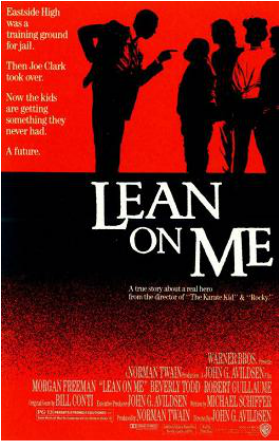 In "Lean on Me," Joe Clark is a middle-class savior In "Lean on Me," Joe Clark is a middle-class savior
To help reveal the class-based assumptions of movies like McFarland, USA it is important to analyze them not only as individual pieces of art, but as part of a larger genre that reveals cultural assumptions about social class, adolescence, and education in the United States. (I analyze 177 films about high school in Hollywood Goes to High School: Cinema, Schools, and American Culture. The updated and revised second edition will be released by Worth Publishers on March 13th, 2015.) When we contrast films like McFarland, USA with films that feature middle-class students we begin to see that social class is an explanatory variable at least as prominent as race. In these middle-class high school films such as The Breakfast Club, Ferris Bueller’s Day Off, and Clueless, the teachers, coaches and principals are never depicted as heroes. In fact, the adult characters become either antagonists or side-show buffoons. In school films about middle-class students it is the students who are invariably the heroes. Middle-class students know how to rescue themselves. Ferris Bueller doesn’t need the help of any adult. He is just fine on his day off. The kids in The Breakfast Club have problems, but they solve them on their own, in spite of adult intervention. Middle-class kids in high school films need no savior -- even when they are flawed, even when they need help, and regardless of their race. It is only poor students who need a savior. The poor students are often black, Latino, or Asian. They are also sometimes white.
The multi-racial poor students in Dangerous Minds, for instance, need Louanne Johnson. They depend upon her. She is, in every real sense, their savior. And she is white. But she is also an adult middle-class outsider with middle-class cultural assumptions about individual responsibility and success. When she tells her students, “You have a choice. It may not be a choice you like, but it’s a choice” she is echoing the sentiments of Coach Ken Carter, a middle-class African-American, when he says to his multi-racial poor basketball players, “Go home and look at your lives tonight. Look at your parents’ lives and ask yourself, ‘Do I want better?’” Jim White knows the odds are stacked against the kids on his cross-country team. But he also admires their work ethic and he has been impressed by how they have responded to his coaching. He tells his team, “There's nothing you can't do with that kind of strength, with that kind of heart." The post-script of the film proudly reveals that all seven team members attended college, most graduated, and they currently have middle-class jobs such as police detective and school teacher. We are even told that several of them are now “landowners.” It is a happy capitalist ending. In Hollywood’s worldview, only poor students need saviors – and the saviors are always adult members of the middle-class. And sometimes they are white. But regardless of their race, the salvation offered is always one that reinforces middle-class cultural assumptions about individualism, hard work, the importance of education, and the possibilities for upward class mobility. Robert C. Bulman Robert C Bulman is a professor of sociology at Saint Mary’s College of California. He received his B.A. in sociology from U.C. Santa Cruz in 1989 and his Ph.D. in sociology from U.C. Berkeley in 1999. He is the author of Hollywood Goes to High School: Cinema, Schools, and American Culture. It was first published in 2005. The second updated and revised edition will be published by Worth Publishers on March 13th, 2015. You can reach him at [email protected]  Image credit: Vincent Paolo Villano Image credit: Vincent Paolo Villano
In recent weeks, there has been an uptick in online discussions about whitewashing, due in no small part to the news that not a single person of color was nominated for an Academy Award this year. Soon after the nominations were announced, the hashtag #OscarsSoWhite began trending, where a number of people pointed out that this was in fact the second time in 20 years that the nominations list featured exclusively white actors. But pull back the Academy’s plush red carpet a little further, and one finds it is the fifth time in 30 years this has happened. Pull it back even further and one finds that in the years between 1927 and 2012, 99 percent of women who have won “Best Actress” have been white, and the same is true for 91 percent of men who have won “Best Actor."
The charge being leveled against the Oscars is of racism; that consciously or not, members of the Academy consistently fail to appreciate and honor the work of non-white actors. The basis for the charge is that there have been enough nominations and enough awards given to detect a bias. That is, if Oscars were awarded like lottery winnings, by sheer chance alone non-white actors would take home a more proportionate share of the little statues, so there is cause to believe that somehow the creep of racial bias is contaminating the nomination process. The fact that 94 percent of voting members are white doesn’t exactly ease fears that the Academy is playing racial favorites. My aim here is not to contribute to the growing criticism of the Academy of Motion Picture Arts and Sciences. While the concerns of a whitewashed Oscars ceremony are certainly justified, in my view this criticism risks missing the forest for the trees. The more one obsesses about whether members of the Academy are racist or whether the ceremony is a racist production, the easier it is to miss the whitewashed media environment the Oscars celebrate. In other words, the Oscars matter, but the ceremony should not be conflated with the institution, where there is a discernible preference for creating white-centered media, and the pactice of doing so is routinely defended as merely an economic calculation. There is some truth to the assertion that that Hollywood producers are simply giving people what they want, and as this clip from the PBS series America Beyond the Color Lines attests, many producers certainly believe this to be the case (skip ahead to the 17:00 mark). However, this explanation is far from complete, and I think there is cause for suspicion that the explanation shifts responsibility from the media makers to the media consumers. In order to grab the problem at its root and expose it, it's necessary to define what is meant by whitewashing. In its simplest form, whitewashing refers to the tendency of media to be dominated by white characters, played by white actors, navigating their way through a story that will likely resonate most deeply with white audiences, based on their experiences and worldviews. There are four distinct types of whitewashing. My claim is that Hollywood is guilty of producing all of these types, and equally important is the fact that Hollywood also creates the conditions by which their continued production becomes almost inevitable. First, whitewashing happens in films based on historical events, where white actors play the role of non-white characters. An exemplar of this first type is the classic movie, Birth of a Nation, where a number of white actors notoriously appeared in blackface. A more recent example is the film Argo, which recounts the CIA plot to rescue six Americans during the Iranian hostage crisis in 1981. In the film, Ben Affleck, a white man, plays the role of Tony Mendez, a Latino CIA officer who headed the operation. In addition to the incongruence between the real man and the actor, Tony Mendez's last name appears to be downplayed in the film. A variation on this first type of whitewashing occurs in adaptations of written works of fiction. This happens when a fictional character from a novel is originally drawn or described as a person of color, yet in the live action adaptation, the character becomes inexplicably white. Sometimes the white actor pretends to be of a different race, as when Johnny Depp pretended to be a Native American man in The Lone Ranger. Other times the character's original racial identity is entirely abandoned and the character simply becomes white, as appears to be the case with The Last Airbender. 
A second type of whitewashing can be observed in films that claim to be based on true stories. Here, the constellation of events that comprise a historical moment are reconfigured, forcing the audience to experience the story from a white perspective, as such, this type of whitewashing is a principal agent in shifting the public memory of real events. For example, Dances with Wolves ostensibly depicts a period of what has been euphemistically described by some historians as the Western Expansion, but is more accurately characterized as a patchwork of genocidal practices and policies by the United States government against the Native Peoples of North America. By inveigling its audience to experience this historical period through the eyes of a white protagonist, Dances with Wolves privileges the white experience. Dances, and other films like it, are whitewashed insofar as they succeed in prioritizing the white experience of witnessing this tragedy over the experiences of Native families who lived through it and died from it.
A third type of whitewashing can occur, even when the majority of characters in a film are played by black and brown actors. Here, the term refers to the observation that white actors secure all the major roles of a film, or they play the most well-rounded, complex characters of a film. Again, Dances of Wolves is an example of this type of film, but other examples include The Last Samurai and Dangerous Minds. Finally, it is also possible to speak of whitewashing as a description of a genre or a particular film industry. Any given film might be dominated by white characters because some stories just happen to be told about white people. Similarly, it sometimes happens that white characters are protagonists in stories, and white actors are sometimes just the best actors for major roles. However, these films might justifiably be called whitewashed if the majority of films produced over a given span of time fit this pattern. In other words, whitewashing cannot always be discerned on a film-by-film basis. It is only after stepping back and looking at the films produced over the span of a period of time that one is able to see that a disproportionate number of films are being written from a white perspective, mostly feature white characters, or that speaking roles are disproportionately awarded to white actors. There is an old cliche that the only color Hollywood executives see is green. Indeed, as I alluded to above, one common defense offered by those who make films is that they are simply giving the public what it wants. What is rarely discussed is that people are not simply born with fully formed preferences. The defense fails because Hollywood films are directly implicated in shaping people's racialized preferences in the first place. If it is true that the paying public truly wants white actors to dominate the silver screen, then Hollywood producers need to own up to the fact that they have played a central role in shaping that desire. Lester Andrist
Originally posted on Feminist Reflections
I just read and reviewed Shannon Wooden and Ken Gillam’s Pixar’s Boy Stories: Masculinity in a Postmodern Age. And I thought I’d build on some of a piece of their critique of a pattern in the Pixar canon to do with portrayals of masculine embodiment. In Black Feminist Thought, Patricia Hill Collins coined the term “controlling images” to analyze how cultural stereotypes surrounding specific groups ossify in the form of cultural images and symbols that work to (re)situate those groups within social hierarchies. Controlling images work in ways that produce a “truth” about that group (regardless of its actual veracity). Collins was particularly interested in the controlling images of Black women and argues that those images play a fundamental role in Black women’s continued oppression. While the concept of “controlling images” is largely applied to popular portrayals of disadvantaged groups, in this post, I’m considering how the concept applies to a consideration of the controlling images of a historically privileged group. How do controlling images of dominant groups work in ways that shore up existing relations of power and inequality when we consider portrayals of dominant groups? Pixar films have been popularly hailed as pushing back against some of the heteronormative gender conformity that is widely understood as characterizing the Disney collection. While a woman didn’t occupy the lead protagonist role until Brave (2012), the girls and women in Pixar movies seem more complex, self-possessed, and even tough. [Side note: Disney’s Frozen is obviously an important exception among Disney movies. See Afshan Jafar’s nuanced feminist analysis of the film here.] In fact, Pixar’s movies are often hailed as pushing back against some of the narratological tyranny of some of the key plot and characterological devices that research has shown to characterize the majority of children’s animated movies. But, what can we learn from their depictions of boys and men? Philip Cohen has posted before on the imagery of gender dimorphism in children’s animated films. Despite some ostensibly (if superficially) feminist features in films like Tangled (2010), Gnomeo and Juliet (2011), and Frozen (2013), Cohen points to the work done by the images of men’s and women’s bodies—paying particular attention to their relative size (see Cohen’s posts here, here, and here). Cohen’s point about exaggerated gendered imagery of bodies might initially strike some as trivial (e.g., “Disney favors compositions in which women’s hands are tiny compared to men’s, especially when they are in romantic relationships” [here]), but it is one small way that relations of power and dominance are symbolically upheld, even in films that might seem to challenge this relationship. How are masculine bodies depicted in Pixar films? And what kind of work do these depictions do? Is this work at odds with their popular portrayal as feminist (or at least feminist-friendly) films? Large, heavily muscled bodies are both relied on and used as comic relief in Pixar’s collection. It’s also true that some of the primary characters are men with traditionally stigmatized embodiments of masculinity: overly thin (Woody in Toy Story, Flic in A Bug’s Life), physically awkward (Linguini in Ratatouille), deformed (Nemo in Finding Nemo), fat (Russell in Up), etc. Yet, these characters often end up accomplishing some mission or saving the day not because of their bodies, but rather, in spite of them. When their bodies are put on display at all, it’s typically as they are held up against a cast of characters whose bodies are presented as more naturally exuding “masculine” qualities we’ve learned to recognize as characteristic of “real” heroes. As Wooden and Gillam write:
Wooden and Gillam use Buzz Lightyear from Toy Story as, perhaps, the most glaring example. When we first meet Buzz in the Andy’s room, Buzz does not recognize himself as a toy. He is foolish, laughably arrogant, imprudent, and, quite frankly, a bit reckless. Yet, the audience is supposed to interpret Buzz as the other toys in Andy’s room do—we’re in awe of him. Buzz embodies a recognizable high status masculinity. Sulley in Monsters Inc. occupies a similar body and, like Buzz, he is instantly situated as occupying a recognizably masculine heroic role (a role that is bolstered by the comically embodied Mike Wazowksi, whose body works to shore up Sulley’s masculinity). While Buzz and Sulley—and similarly embodied men in other Pixar movies—are sometimes teased for conforming to some of the “dumb jock” stereotypes that characterize male action heroes of the 1980s, their bodies retain their status and still work as controlling images that reiterate social hierarchies. In C.J. Pascoe’s research on masculinity in American high schools, she coined the term “jock insurance” to address a very specific phenomenon. Boys occupying high status masculinities were afforded a form of symbolic “insurance” that enabled them to transgress masculinity without affecting their status. In fact, their transgressions often worked in ways that actually shored up their masculinities. This kind of “jock insurance” is relied upon as a patterned narratological device in Pixar movies. Barrel-chested, brawny, male characters are allowed to be buffoons; they’re allowed to participate in potentially feminizing or emasculating behaviors without having those behaviors challenge the masculinities their bodies situate them as occupying or their status (in anything other than a superficial sort of way). For instance, Sulley, Mr. Incredible, Lightning McQueen, and Buzz Lightyear perform domestic masculinities in ways that don’t actually challenge their symbolic position of dominance. Indeed, the awkwardness with which they participate in these roles implicitly suggests that these men naturally belong elsewhere. 
In The Incredibles, Bob Parr’s incredible strength and monstrous body look silly accomplishing domestic tasks or even occupying a traditionally domestic masculinity. His small car helps is body appear laughable in this role as he drives to work. At work, Bob’s desk plays a similar role. His body is depicted as not belonging there—domesticity is symbolically holding him back. This sort of “crisis of masculinity” narrative plays out in the stories of many of these characters. So, when they occupy the role they are initially depicted as denying, the narrative creates a frame for the audience to collectively experience relief as they take on the heroic roles for which their bodies symbolically situate them as more naturally suited. The scene in The Incredibles in which Bob Parr (Mr. Incredible) quits his job by punching his boss (whose physically inferior body is regularly situated alongside Bob’s for comic relief) through a wall is perhaps the most exaggerated example of this. The pleasures these films invite us to share at these moments when gendered hierarchies of embodiment are symbolically put on display play a role in reproducing inequality.

Similar to Nicola Rehling’s analysis of white, heterosexual masculinity in popular movies in Extra-Ordinary Men, portrayals of masculinity in Pixar films work in ways that simultaneously decenter and recenter dominant embodiments of masculinity – and in the process, obscure relations of power and inequality. Indeed, side-kicks and villains are most often depicted as occupying masculine bodies less worthy of status. These masculine counter-types (like Randall in Monsters Inc., Sid Phillips in Toy Story, or Buddy Pine/Syndrome in The Incredibles) embody masculinities portrayed as “deserving” the “justice” they are served.
The films in Pixar’s collection show a patterned reliance on controlling images associated with the embodiment of masculinity that shores up the very systems of gender inequality the films are often lauded as challenging. To be clear, I like these films – and clearly, many of them are a significant step in a new direction. Yet, we continue to implicitly exalt controlling images of masculine embodiment that reiterate gender relations between men and exaggerate gender dimorphism between men and women. 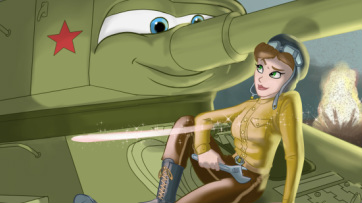
Sometimes, when you point out how patterns reproduce inequality, people expect you to provide a solution. But, what would challenging these images actually look like? That is, I think, a more difficult question than it might at first appear. A former Dreamworks animator, Jason Porath, might help us think about this in a new way. Porath’s blog--Rejected Princesses—was recently featured on NPR’s All Things Considered. On the site, Porath plays with “princessizing” unsung heroines unlikely to hit the big screen. His tagline reads: “Women too awesome, awful, or offbeat for kids’ movies.” Yet, even here, Porath relies on recognizable embodiments of “the princess” to depict these women—like his portrayal of Mariya Oktyabrskaya, the first woman tanker to be awarded the “Hero of the Soviet Union” award. Similarly, cartoonist David Trumble produced a series of images that “over-feminize” real-life heroines like Anne Frank, Susan B. Anthony, Marie Curie, Sojourner Truth and Ruth Bader Ginsberg. While both of these projects make powerful statements, we need more cartoon imagery that challenge these gendered embodiments alongside narratives and characters that support this project. What that might actually look like is currently unclear. What is clear, I think, is that we can do better.
 The Silence of the Lambs has a transphobic message The Silence of the Lambs has a transphobic message
Hollywood is a routine offender in promoting transphobia and cissexism—the negative attitudes and discrimination directed toward people whose gender identity, or perceived expression, is different from the sex they were assigned at birth. In my view, few films are as offensive as Jonathan Demme’s Silence of the Lambs, which demonizes and delegitimizes transgender individuals through portraying the serial killer, Jame Gumb—otherwise known as Buffalo Bill—as a psychotic transgender person. At the same time, normative expressions of gender are idealized as innocent. The result is a transphobic dichotomy with cisgender and transgender positioned as moral opposites. For those who haven’t seen the film, Silence of the Lambs follows FBI Academy student Clarice Starling, played by Jodi Foster, as she solves a recent string of murders in the Midwest committed by the serial killer known as Buffalo Bill, played by Ted Levine. She enlists the help of an incarcerated cannibalistic serial killer and former psychiatrist, Hannibal Lecter, who analyzes the case files in order to uncover Buffalo Bill’s true identity. In this process, Starling discloses a traumatic event in her childhood involving waking up to the screaming of lambs about to get slaughtered. She ran away from her family ranch, attempting to save one of the lambs, but was unable to. Here, lambs are a symbol of innocence. Starling’s inability to save them and her subsequent nightmares are manifestations of her guilt. The film’s title is a reference to the end of Starling’s nightmares, when the screaming lambs become silent, ideally through her solving the Buffalo Bill case and saving his living victim, Catherine Martin. Throughout the film, it is revealed that Buffalo Bill is a transgender woman. She has applied for sex-reassignment surgery, cross-dresses, and prefers to hide her penis between her legs. Ultimately, Starling saves Martin through the clues that Lecter slowly discloses in exchange for a chance at a prison with better living conditions. In the end, Starling kills Gumb, and the closing scene of the film is of Lecter’s escape and intent to kill Frederick Chilton, a doctor who worked at Lecter's prison.  The trope of the killer transgender appeared in Psycho (1960) The trope of the killer transgender appeared in Psycho (1960)
Jame Gumb’s gender identity is handled in a number of very problematic ways. First, her character is a classic example of the killer transgender trope, also famously present in Alfred Hitchcock’s Psycho. Transgender women are often represented as psychotic killers as a lazy method of responding to mainstream society’s fear of gender nonconforming people. This popular trope in film reinforces the idea that being transgender is unnatural and perverted, and pathologizes gender fluidity. It’s a stowaway on the Hollywood global distribution machine, reaching into countless theaters and homes around the world and embedding transphobia in the minds of a wide array of viewers.
In reality, the opposite of the killer transgender trope is true. Often, transgender people, specifically women, are the victims of hate crimes based on their gender identity. In 2012, transgender women were victims of nearly 54% of anti-LGBT related homicides. Perhaps the dehumanizing representations of these individuals in mass media helped spread the idea that transgender lives are less valuable, and by extension, murdering them is more justifiable.
A closer look at the diction of Lecter’s quote reveals more subtle issues. His use of the word “more” before “savage” and “terrifying” implies that there are savage and terrifying elements to actual transgender people. Since Hannibal Lecter is a serial killer himself, one might question his credibility as an arbiter of the film’s overall message. However, in addition to being a sociopathic serial killer, he was also a brilliant psychiatrist, whose analysis of the Buffalo Bill case files led to Gumb’s ultimate demise. His views regarding Gumb are highly regarded and portrayed as astoundingly accurate. Therefore, his psychoanalysis of Gumb represents the ultimate message of the film itself and should be seriously considered. One of the most memorable scenes in Silence of the Lambs is the one where Gumb dresses up in a flowing cloth, tucks her penis between her legs, and poses in front of a mirror, all while wearing the hair and scalp of one of her victims. This scene is often touted as the film’s most disturbing moment. Buffalo Bill is supposed to be scary not only because she murders and skins her victims, but because she is male-bodied in women’s clothing. The “cross-dressing” is portrayed as especially sinister and perverted, but to stand or dance in front a mirror with one’s penis tucked between her legs is an exercise many transgender women actually perform. The film distorts this completely normal and often empowering activity with the juxtaposition of Catherine Martin screaming for help from the bottom of a dry well in the background. Real life transgender people may internalize this scene, and think that they should hide their non-normative gender expressions at the expense of their emotional well-being. In addition to demonizing and stigmatizing gender fluidity, Silence of the Lambs idealizes normative gender expression. Conformity to gender roles is seen as innocent, an antithesis to gender variance. This is emphasized in the scene in which Gumb applies lipstick as she utters the chilling line, “Would you fuck me? I’d fuck me. I’d fuck me hard.” This scene is cut at the same time as Martin screams from the bottom of the well, just as the lambs screamed. Nobody could hear Martin, she was effectively silenced. The film showed a few seconds of Gumb, then switched back to a few seconds of Martin. Martin is illustrated as the innocent victim, conforming to the gendered damsel in distress trope, in contrast to Gumb, who is the gender-bending killer. It is important to identify transphobia in films for a variety of reasons. In addition to media reflecting the prevalent attitudes and ideas of a society, media can also shape the ideas of a society. The negative representations of transgender people in visual media, especially film, contribute to their overall discrimination. In addition to the disproportionate amount of transgender women killed in anti-LGBT homicides, there is a high frequency of suicide among this subjugated population. 41% of Americans who are transgender or gender nonconforming have attempted suicide at least once in their lives. This startling statistic may be related to the lack of positive media representation for transgender people. Identifying transphobia and cissexism in film is a means of placing the responsibility back on media corporations and holding them accountable for how they portray marginalized groups. Fair portrayals of oppressed groups of people leads to an awareness of their real life issues. For transgender people, such issues include job discrimination, violence, healthcare, and exclusion in a variety of spaces. In real life, transgender people are not the killers, but rather the innocent victims of horrific hate crimes. The film Silence of the Lambs ignores this fact, effectively silencing the lambs. Savannah Staubs Savannah Staubs is an undergraduate sociology major and activist at University of Maryland, College Park. She skillfully avoids employment by illustrating zines, collecting leaf skeletons, playing her ukulele, and studying environmental justice. |
.
.
Tags
All
|
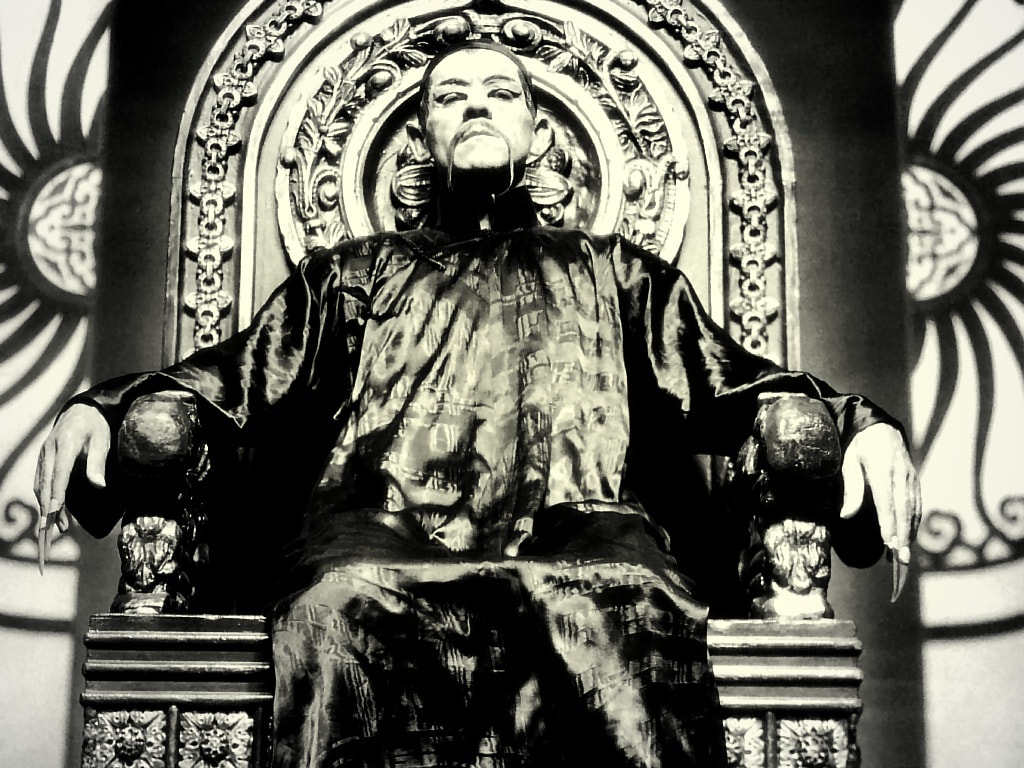



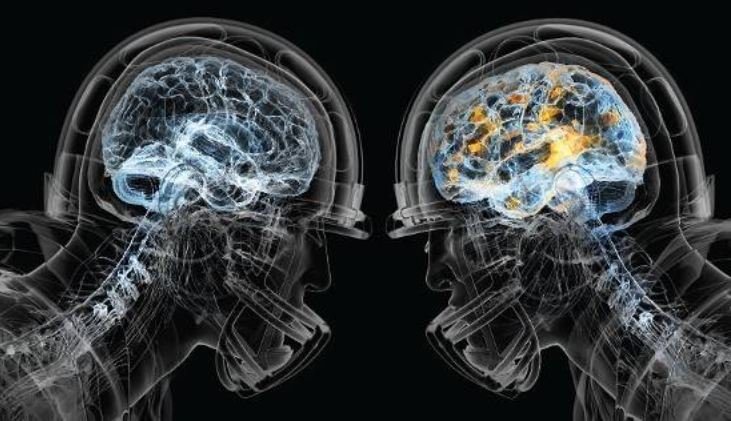
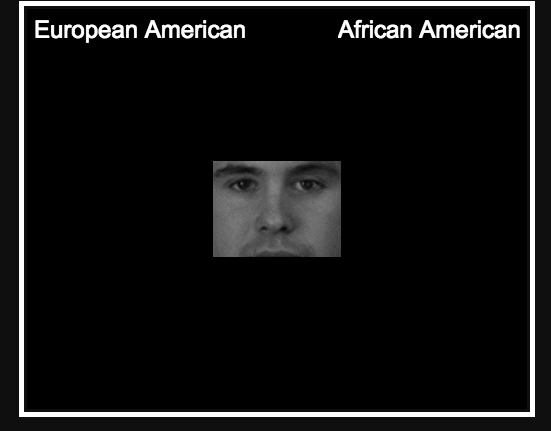

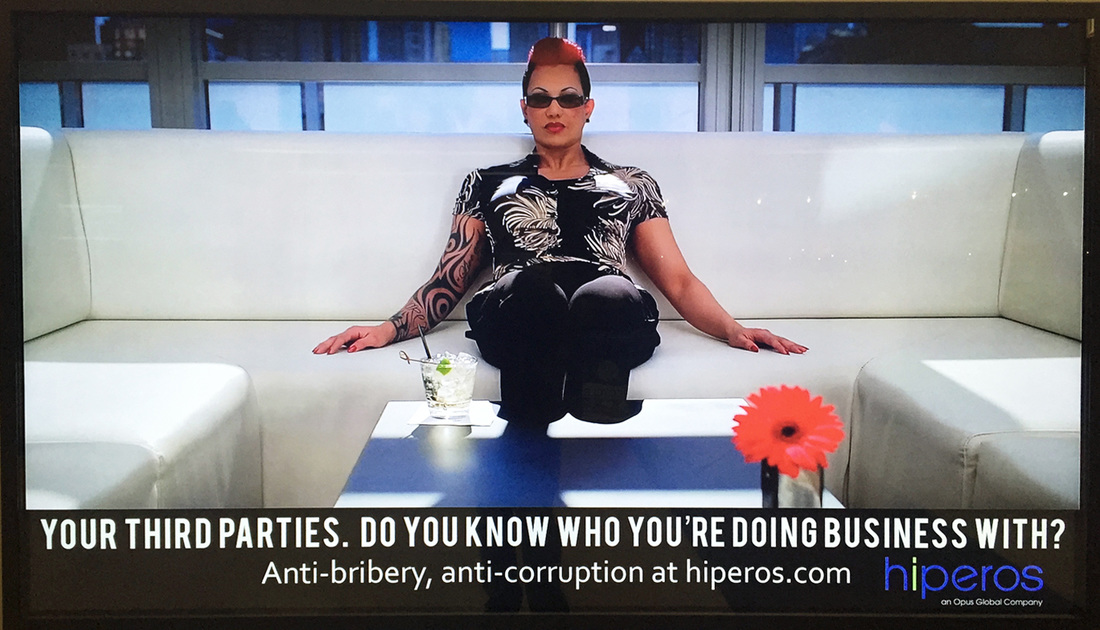


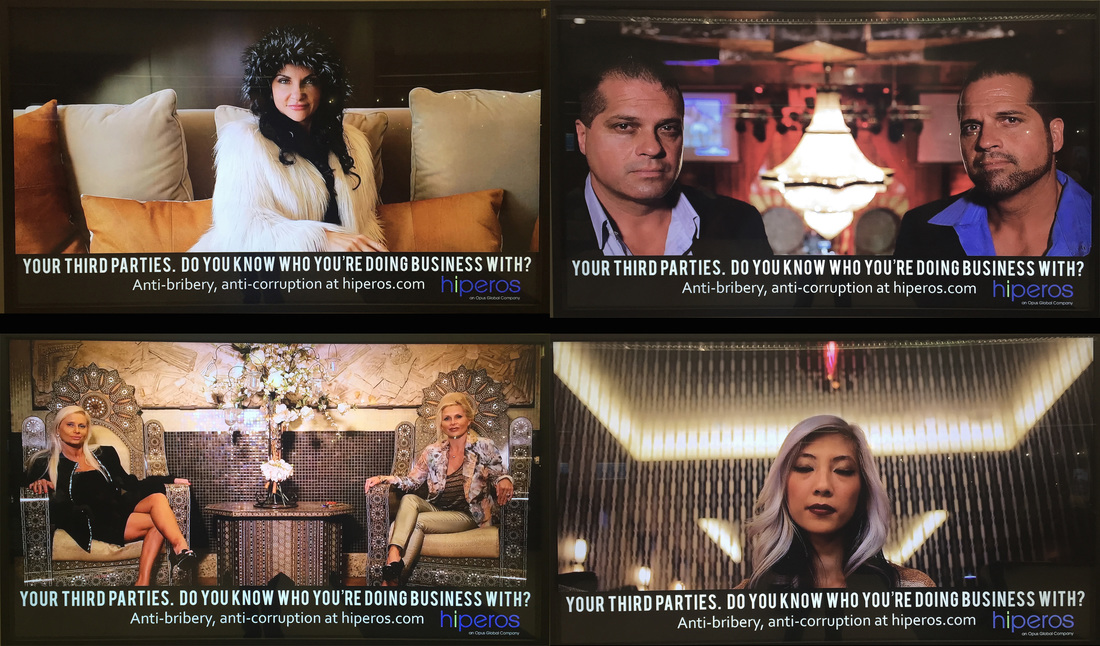


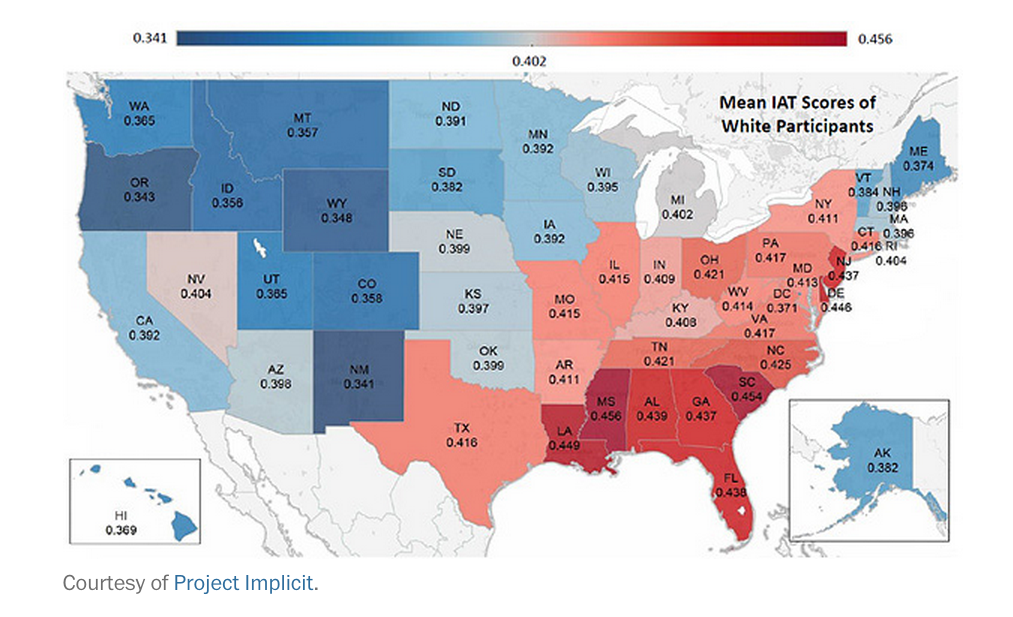
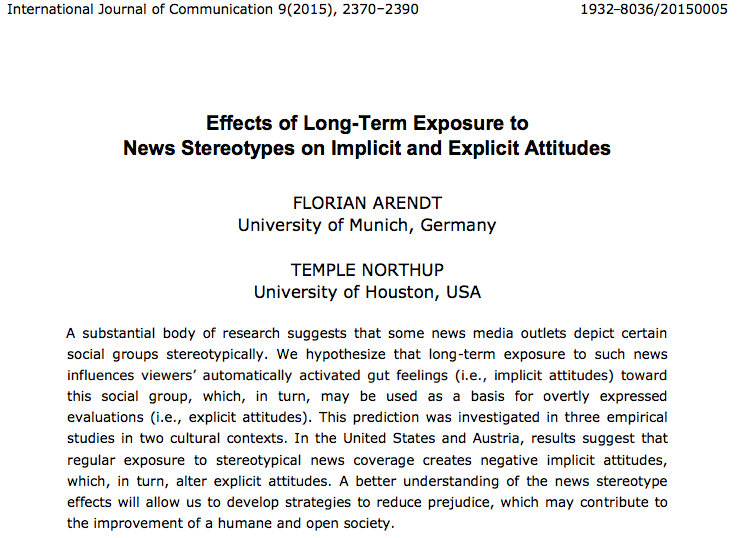
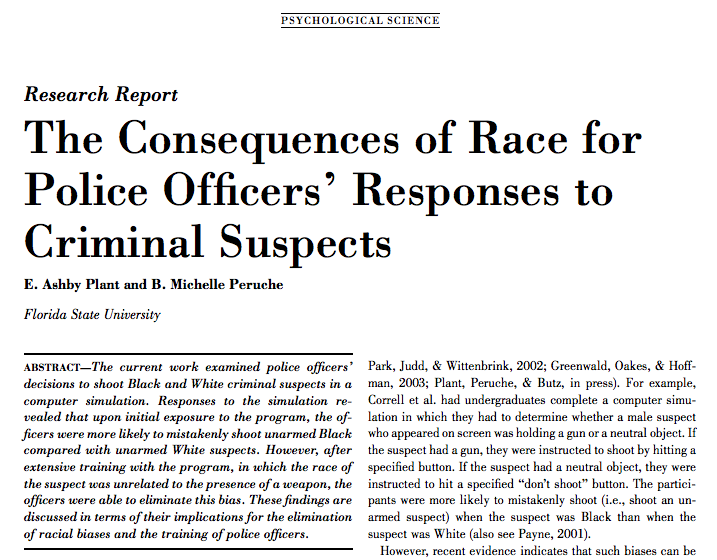

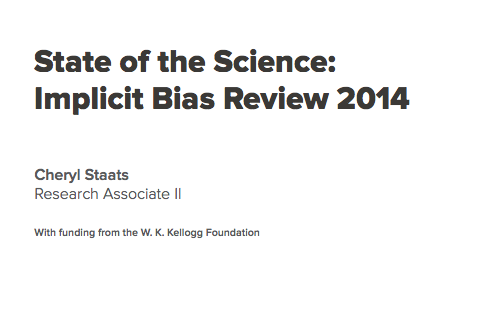
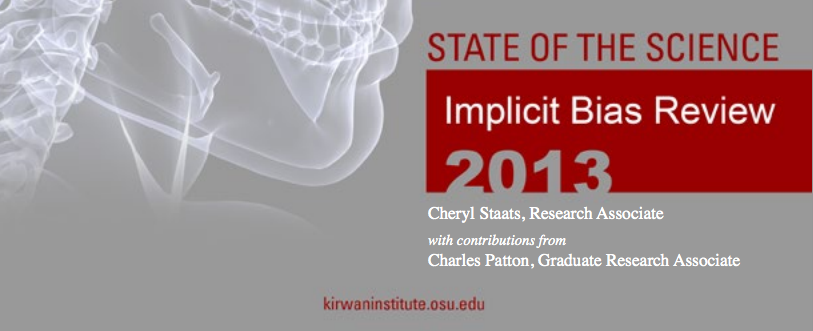




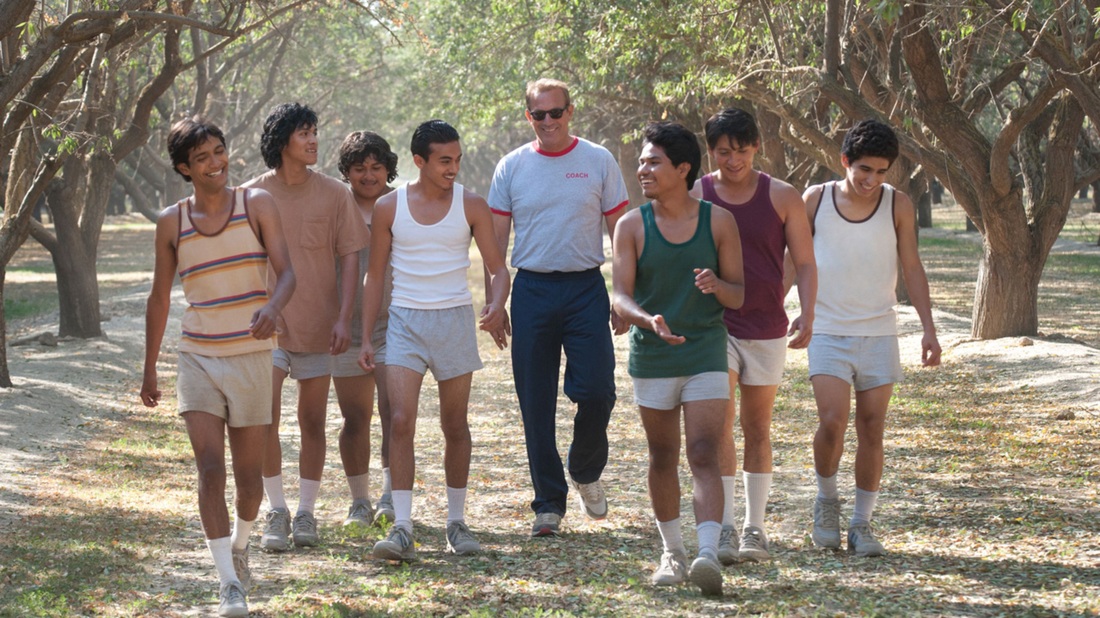


 RSS Feed
RSS Feed